997 scholarly books by The Institution of Engineering and Technology and 57
start with D
997 scholarly books by The Institution of Engineering and Technology and 57
997 scholarly books by The Institution of Engineering and Technology
57 start with D start with D
57 start with D start with D

Darney's Circuit Theory and Modelling
Updated and extended for EMC/EMI
Ian B. Darney
The Institution of Engineering and Technology, 2024
The equipotential earth is a fundamental requirement of circuit theory, because it dramatically reduces the complexity of the mathematics required to simulate a circuit. Unfortunately, in the real world, no such equipotential earth exists, nor can it ever do so, which means simulating a circuit to evaluate its electromagnetic compatibility (EMC) and susceptibility to electromagnetic interference (EMI) is largely dependent on using the Maxwell equations. The Maxwell equations are inherently complex, however, and so have high processing power requirements and, as with all complex systems, there is a propensity to generate and magnify errors.
[more]
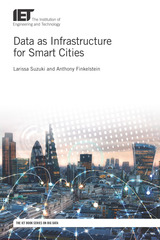
Data as Infrastructure for Smart Cities
Larissa Suzuki
The Institution of Engineering and Technology, 2019
This book describes how smart cities can be designed with data at their heart, moving from a broad vision to a consistent city-wide collaborative configuration of activities. The authors present a comprehensive framework of techniques to help decision makers in cities analyse their business strategies, design data infrastructures to support these activities, understand stakeholders' expectations, and translate this analysis into a competitive strategy for creating a smart city data infrastructure. Readers can take advantage of unprecedented insights into how cities and infrastructures function and be ready to overcome complex challenges. The framework presented in this book has guided the design of several urban platforms in the European Union and the design of the City Data Strategy of the Mayor of London, UK.
[more]

Data Communications and Networks
R.L. Brewster
The Institution of Engineering and Technology, 1994
There has been unprecedented development in data communications and services since the first edition of this book was published in 1986. In less than a decade the technology has advanced beyond all recognition and the first edition is now really no more than an interesting historical record. The second edition, published in 1989, reflected some of these developments and introduced the then emerging proposals for an integrated services digital network (ISDN). Since that date ISDN has become a fact and has already begun to be superseded by proposals and standards for a broadband ISDN (B-ISDN), offering greatly enhanced and flexible data rates over a public network based mainly on optical fibre transmission. Optical fibre technology is also being used in wide-area private digital networks and for high-capacity internetworking operations.
[more]
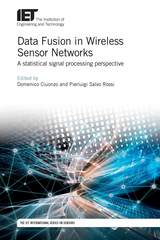
Data Fusion in Wireless Sensor Networks
A statistical signal processing perspective
Domenico Ciuonzo
The Institution of Engineering and Technology, 2019
The role of data fusion has been expanding in recent years through the incorporation of pervasive applications, where the physical infrastructure is coupled with information and communication technologies, such as wireless sensor networks for the internet of things (IoT), e-health and Industry 4.0. In this edited reference, the authors provide advanced tools for the design, analysis and implementation of inference algorithms in wireless sensor networks.
[more]
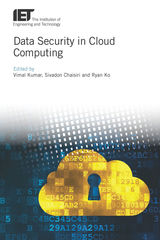
Data Security in Cloud Computing
Vimal Kumar
The Institution of Engineering and Technology, 2017
Cloud Computing has already been embraced by many organizations and individuals due to its benefits of economy, reliability, scalability and guaranteed quality of service among others. But since the data is not stored, analysed or computed on site, this can open security, privacy, trust and compliance issues. This one-stop reference covers a wide range of issues on data security in Cloud Computing ranging from accountability, to data provenance, identity and risk management.
[more]
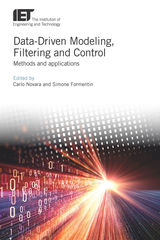
Data-Driven Modeling, Filtering and Control
Methods and applications
Carlo Novara
The Institution of Engineering and Technology, 2019
The scientific research in many engineering fields has been shifting from traditional first-principle-based to data-driven or evidence-based theories. The latter methods may enable better system design, based on more accurate and verifiable information.
[more]
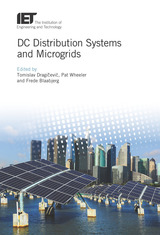
DC Distribution Systems and Microgrids
Tomislav Dragičević
The Institution of Engineering and Technology, 2018
DC electric power distribution systems have higher efficiency, better current carrying capacity and faster response when compared to conventional AC systems. They also provide a more natural interface with many types of renewable energy sources. Furthermore, there are fewer issues with reactive power flow, power quality and frequency regulation, resulting in a notably less complex control system. All these facts lead to increased applications of DC systems in modern power systems. Still, design and operation of these systems imposes a number of specific challenges, mostly related to lack of mature protection technology and operational experience, as well as very early development stage of standards regarding DC based power infrastructure.
[more]
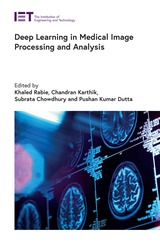
Deep Learning in Medical Image Processing and Analysis
Khaled Rabie
The Institution of Engineering and Technology, 2023
Medical images, in various formats, are used by clinicians to identify abnormalities or markers associated with certain conditions, such as cancers, diseases, abnormalities or other adverse health conditions. Deep learning algorithms use vast volumes of data to train the computer to recognise certain features in the images that are associated with the disease or condition that you wish to identify.
[more]
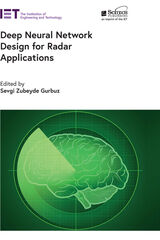
Deep Neural Network Design for Radar Applications
Sevgi Zubeyde Gurbuz
The Institution of Engineering and Technology, 2021
Novel deep learning approaches are achieving state-of-the-art accuracy in the area of radar target recognition, enabling applications beyond the scope of human-level performance. This book provides an introduction to the unique aspects of machine learning for radar signal processing that any scientist or engineer seeking to apply these technologies ought to be aware of.
[more]
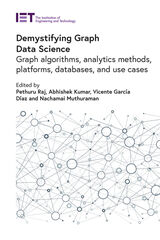
Demystifying Graph Data Science
Graph algorithms, analytics methods, platforms, databases, and use cases
Pethuru Raj
The Institution of Engineering and Technology, 2022
With the growing maturity and stability of digitization and edge technologies, vast numbers of digital entities, connected devices, and microservices interact purposefully to create huge sets of poly-structured digital data. Corporations are continuously seeking fresh ways to use their data to drive business innovations and disruptions to bring in real digital transformation. Data science (DS) is proving to be the one-stop solution for simplifying the process of knowledge discovery and dissemination out of massive amounts of multi-structured data.
[more]

Demystifying Marketing
A guide to the fundamentals for engineers
Patrick Forsyth
The Institution of Engineering and Technology, 2007
Marketing is a big topic. It is complex, vital - and yet too often misunderstood.
[more]
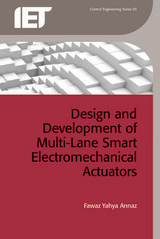
Design and Development of Multi-Lane Smart Electromechanical Actuators
Fawaz Yahya Annaz
The Institution of Engineering and Technology, 2014
The unavoidable element in the development of flight control systems (to date) has been in hydraulic actuators. This has been the case primarily because of their proven reliability and the lack of alternative technologies. However, the technology to build electromechanically actuated primary flight control systems is now available, which may mark the end of the hydraulic actuation systems - an important step for the development of the future 'all-electric' aircraft.
[more]

Design, Control and Monitoring of Tidal Stream Turbine Systems
Mohamed Benbouzid
The Institution of Engineering and Technology, 2023
The worldwide potential of electric power from tidal currents is potentially between 100 and 120 GW. The technology uses the ebb and flow currents off coasts to drive submerged turbines. The high load factor and the predictable resource characteristics make tidal energy an attractive, reliable power source. The technology is advancing rapidly towards maturity; several projects have now reached a relatively mature stage and are close to completion, but challenges remain. Topics for ongoing research include hydrodynamics and turbine design, as well as the power conversion interface (including the electric generator), control, and monitoring and maintenance challenges.
[more]
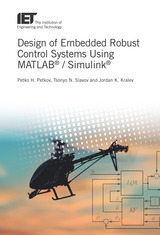
Design of Embedded Robust Control Systems Using MATLAB® / Simulink®
Petko Hristov Petkov
The Institution of Engineering and Technology, 2018
Robust control theory allows for changes in a system whilst maintaining stability and performance. Applications of this technique are very important for dependable embedded systems, making technologies such as drones and other autonomous systems with sophisticated embedded controllers and systems relatively common-place.
[more]

Design of High Frequency Integrated Analogue Filters
Yichuang Sun
The Institution of Engineering and Technology, 2002
Analogue filters will always be needed for interfacing between digital systems and the 'real' analogue world. In fact, the high frequency integrated analogue filter has become a key component in achieving ubiquitous communication and computing. In recent years, the renewed interest in analogue, mixed-signal and RF circuits due to the need for system-on-chip design and the market for wireless communications has led to a new peak of research into high frequency integrated analogue filters.
[more]

Design of High-Efficiency Integrated AC-DC Convertors
Ke-Horng Chen
The Institution of Engineering and Technology, 2018
Increased efficiency in power electronic converters of all types and ratings is of considerable interest, not only from the viewpoint of improved converter thermal management but also from an environmental perspective. This important book describes the advantages and challenges, underlying the theory, and applications of high-efficiency AC-DC converters that are built into circuits, an increasingly popular design approach in power electronics.
[more]

Design of Modern Control Systems
D.J. Bell
The Institution of Engineering and Technology, 1982
This book presents developments in analysis and design techniques for control systems. Included are exciting results for feedback systems using complex variable methods, the important concept of robustness in controller design and the increasingly important topic of decentralized control for large scale systems. These and many other contributions illustrate the great activity and rapid progress which has taken place in the subject over the past few years. Only by bringing these contributions together under one cover can the practising engineer in industry and indeed the engineer in university or polytechnic keep fully informed on the 'state of the art' on a number of different fronts. Application of the theoretical developments and practical aspects of the subject are not forgotten; analysis and design of a nuclear boiler and some direct digital control system design procedures are but two topics discussed in the present book. Several of the chapters are followed by problems on the subject matter and worked solutions to most of these problems are given at the end of the book. This aspect will find favour with many readers since such contributions are often a great help in the understanding of the subject matter.
[more]
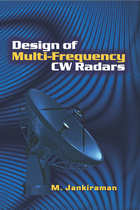
Design of Multi-Frequency CW Radars
M. Jankiraman
The Institution of Engineering and Technology, 2007
This book deals with the basic theory for design and analysis of Low Probability of Intercept (LPI) radar systems. The design of one such multi-frequency high resolution LPI radar, PANDORA, is covered. This work represents the first time that the topic of multi-frequency radars is discussed in such detail and it is based on research conducted by the author in The Netherlands. The book provides the design tools needed for development, design, and analysis of high resolution radar systems for commercial as well as military applications. Software written in MATLAB and C++ is provided to guide the reader in calculating radar parameters and in ambiguity function analysis. Some radar simulation software is also included.
[more]
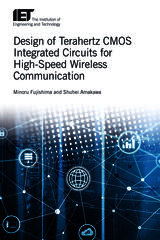
Design of Terahertz CMOS Integrated Circuits for High-Speed Wireless Communication
Minoru Fujishima
The Institution of Engineering and Technology, 2019
Communications technology at a frequency range into Terahertz (THz) levels has attracted attention because it promises near-fibre-optic-speed wireless links for the 5G and post-5G world. Transmitter and receiver integrated circuits based on CMOS, which has the ability to realize such circuits with low power consumption at a low cost, are expected to become increasingly widespread, with much research into the underlying electronics currently underway.
[more]

Design Thinking for Engineering
A practical guide
Iñigo Cuiñas
The Institution of Engineering and Technology, 2023
The core of engineering learning is the ability to solve problems in specific fields; thus, engineering courses emerge as places where design thinking is a useful tool in training future engineers.
[more]

Designer's Guide to Energy Efficient Electrical Installations
The Institution of Engineering and Technology
The Institution of Engineering and Technology, 2016
BS 7671 has always been about capacity, safety and control of electrical installations. Could energy efficiency negate that?
[more]

Designing Businesses
How to develop and lead a high technology company
George Young
The Institution of Engineering and Technology, 1997
Engineers and other technical professionals are increasingly presented with the opportunity of running their own businesses as entrepreneurs. In other circumstances, particularly in times of great change in industry, they may be considered 'corporate entrepreneurs', leading divisions of larger organisations in an entrepreneurial fashion.
[more]
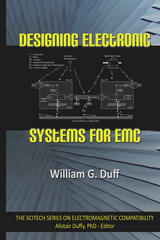
Designing Electronic Systems for EMC
William G. Duff
The Institution of Engineering and Technology, 2011
This handbook outlines the factors that must be considered in designing circuits, equipment, and systems for electromagnetic compatibility (EMC). It teaches circuit and system designers practical approaches to thwart the ever present culprit of electromagnetic interference (EMI). By emphasizing the fundamentals, it provides information that will help readers understand the rationale that forms the basis for many of the EMC practices and procedures. There is much information about these topics available in disparate forms (journal articles, symposia proceedings, etc.) but this book brings the critical knowledge into a single source for battling EMI.
[more]

Deterministic Control of Uncertain Systems
A.S.I. Zinober
The Institution of Engineering and Technology, 1990
One of the main fields of study in the control of dynamical systems has been the effective control of time-varying systems with uncertain parameters and external disturbances. In contrast to stochastic adaptive controllers with identification algorithms, the deterministic control of uncertain time-varying systems has a fixed nonlinear feedback controller, which operates effectively over a specified magnitude range of a class of system variations. If the variations satisfy certain matching conditions, complete insensitivity to system uncertainties can be achieved. The two main approaches are Variables Structure and Lyapunov control. The contents of this book reflect the research output of many authors. The chapters include material of an introductory nature as well as some of the latest research results. Attention has also been focussed upon some of the main areas of application, which include electric motor drives, robotics and flight control systems. The book should prove useful to control designers, theoreticians and graduate students.
[more]

Developing a Make or Buy Strategy for Manufacturing Business
David Probert
The Institution of Engineering and Technology, 1997
How can a company decide where to concentrate its expertise? Why are some companies better at exploiting their strengths than others? Is there a link between the range of a company's activities and its success and profitability?
[more]

Developing Effective Engineering Leadership
Ray Morrison
The Institution of Engineering and Technology, 2003
Engineering companies and other organizations face many serious challenges in the 21st Century. One that is now becoming widely recognized is the loss of corporate knowledge through staff turnover, whether it is natural or forced through downsizing or delayering. A company's store of knowledge and expertise is an asset built up through the learning and experience of its employees.
[more]

The Development of a Strategy for Integrated Manufacturing Systems
Norman A. Schofield
The Institution of Engineering and Technology, 1990
This Guide is the first produced by The Integrated Manufacturing Systems Working Party of the Institution of Production Engineers. In considering the wide range of issues which arise for any Manufacturing company embarking on the integration of manufacturing systems, the Working Party decided to take a staged approach and this guide represents the first of several on topics relating to Integrated Manufacturing Systems.
[more]
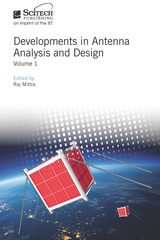
Developments in Antenna Analysis and Design, Volume 1
Raj Mittra
The Institution of Engineering and Technology, 2019
Developments in Antenna Analysis and Design presents recent developments in antenna design and modeling techniques for a wide variety of applications, chosen because they are contemporary in nature, have been receiving considerable attention in recent years, and are crucial for future developments. It includes topics such as body-worn antennas, that play an important role as sensors for Internet of Things (IoT), and millimeter wave antennas that are vitally important for 5G devices. It also covers a wide frequency range that includes terahertz and optical frequencies. Additionally, it discusses topics such as theoretical bounds of antennas and aspects of statistical analysis that are not readily found in the existing literature.
[more]
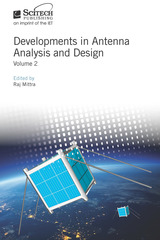
Developments in Antenna Analysis and Design, Volume 2
Raj Mittra
The Institution of Engineering and Technology, 2019
Developments in Antenna Analysis and Design presents recent developments in antenna design and modeling techniques for a wide variety of applications, chosen because they are contemporary in nature, have been receiving considerable attention in recent years, and are crucial for future developments. It includes topics such as body-worn antennas, that play an important role as sensors for Internet of Things (IoT), and millimeter wave antennas that are vitally important for 5G devices. It also covers a wide frequency range that includes terahertz and optical frequencies. Additionally, it discusses topics such as theoretical bounds of antennas and aspects of statistical analysis that are not readily found in the existing literature.
[more]

Developments in Antenna Analysis and Synthesis
Raj Mittra
The Institution of Engineering and Technology, 2018
This book addresses practical issues which antenna design engineers face every day and discusses the concepts and tools which will help them design better antennas. It covers recent advances in the antenna field, giving a compilation of the latest advances and designs. Topics include antenna pattern synthesis; reconfigurable and active antennas; MIMO antennas; reflectarray antennas; 3-D printed antennas and many more.
[more]
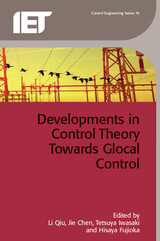
Developments in Control Theory Towards Glocal Control
Li Qiu
The Institution of Engineering and Technology, 2012
Glocal control, a term coined by Professor Shinji Hara at The University of Tokyo, represents a new framework for studying behaviour of complex dynamical systems from a feedback control perspective. A large number of dynamical components can be interconnected and interact with each other to form an integrated system with certain functionalities. Such complex systems are found in nature and have been created by man, including gene regulatory networks, neuronal circuits for memory, decision making, and motor control, bird flocking, global climate dynamics, central processing units for computers, electrical power grids, the World Wide Web, and financial markets. A common feature of these systems is that a global property or function emerges as a result of local, distributed, dynamical interactions of components. The objective of 'glocal' (global + local) control is to understand the mechanisms underlying this feature, analyze existing complex systems, and to design and create innovative systems with new functionalities. This book is dedicated to Professor Shinji Hara on the occasion of his 60th birthday, collecting the latest results by leading experts in control theories to lay a solid foundation towards the establishment of glocal control theory in the coming decades.
[more]
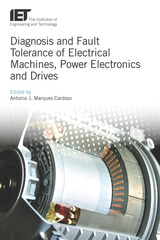
Diagnosis and Fault Tolerance of Electrical Machines, Power Electronics and Drives
Antonio J. Marques Cardoso
The Institution of Engineering and Technology, 2019
Electrical machines and drives, and their associated power electronics, are a key part of an industrialized society. Reliability is a major challenge in systems design, operation, and maintenance of these technologies. Unreliable systems drive up costs, so diagnostics and fault tolerance become important to help maintain the system and estimate its operational lifetime.
[more]
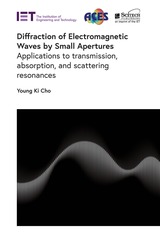
Diffraction of Electromagnetic Waves by Small Apertures
Applications to transmission, absorption, and scattering resonances
Young Ki Cho
The Institution of Engineering and Technology, 2024
This book deals with low-frequency diffraction characteristics of small aperture structures such as a narrow slit and a small hole and their periodic structures, with emphasis on the transmission maximum phenomena through those structures. A narrow slit structure in a conducting plane has been used as a simple model for a narrow slot planar antenna, for example, whereas a small hole structure has been widely used as an aperture-coupling element in a transmission cavity filter or a directional coupler in the microwave regime.
[more]
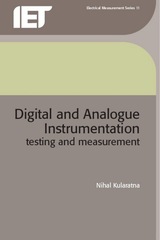
Digital and Analogue Instrumentation
Testing and measurement
Nihal Kularatna
The Institution of Engineering and Technology, 2003
To obtain the full value from instrumentation, users require familiarity with a number of basic concepts and an understanding of how those building blocks relate to one another. In this book, Nihal Kularatna provides an introduction to the main families of instruments for students and professionals who have to carry out practical work in electronics and measurement. For each family he covers internal design, use and applications, highlighting their advantages and limitations from a practical application viewpoint.
[more]

Digital Communications
Principles and systems
Ifiok Otung
The Institution of Engineering and Technology, 2014
A worldwide digital and wireless communication revolution has taken place in the last 20 years which has created a high demand in industry for graduates with in-depth expertise in digital transmission techniques and a sound and complete understanding of their core principles. Digital communications: Principles and systems recognises that although digital communications is developing at a fast pace, the core principles remain the same. It therefore concentrates on giving the reader a thorough understanding of core principles and extensive coaching in the solution of practical problems drawn from various application areas. The intention is that after studying the material presented, the student will have a solid foundation free of knowledge gaps, and will be fully equipped to undertake digital communication systems analysis, design and computer simulations, and to deal with specialised applications and follow advances in the technology. Topics covered include:
[more]
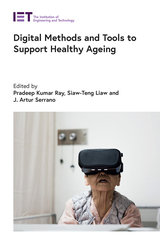
Digital Methods and Tools to Support Healthy Ageing
Pradeep Kumar Ray
The Institution of Engineering and Technology, 2021
While digital transformations are happening in all walks of society and business, there is real potential for improving the quality of life of the elderly using digital methods and tools. Digital health promises to deliver better healthcare quality cost-efficiently to more people, especially in the case of lifestyle diseases such as diabetes. It will achieve this by combining the benefits of telehealth, eHealth, data-driven personalised healthcare, and evidence-based care. This book presents a discussion of evolving digital technologies, such as smart phones and assisted living, and innovative digitally based services that are helping improve the quality and cost of healthcare for the elderly.
[more]
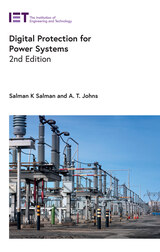
Digital Protection for Power Systems
Salman K. Salman
The Institution of Engineering and Technology, 2022
Electric power systems have become much more complex in the past years, due to the integration of distributed generation including renewable energy sources and the challenges caused by intermittency of renewables. This complexity makes power systems potentially more vulnerable. However, use of computer-based protection methods (i.e., digital protection relays) supported by communication technology have helped in protecting electrical networks from faults to which they are subjected to.
[more]

Digital Protection for Power Systems
A.T. Johns
The Institution of Engineering and Technology, 1995
Digital protection is based on the use of computers in power line relaying. Since the late 1960s, digital devices and techniques have been applied to almost all new protection schemes. Today the technology is moving towards standardised hardware platforms; at the software level, however, there remains a huge variety in approaches and protection algorithms.
[more]

Digital Signal Filtering, Analysis and Restoration
Jiří Jan
The Institution of Engineering and Technology, 2000
The processing and analysis of signals and data is today a fast-growing and crucial activity in a diverse range of fields, not only in communications and image technology itself but in almost every other research area in science. The purpose of this book is to explain some of the theoretical concepts that underly the methods now in common use. The author starts from the assumption that some knowledge of the basic principles should be in the toolkit of every engineer or scientist working with signals or data.
[more]

Digital Signal Processing
Principles, devices and applications
N.B. Jones
The Institution of Engineering and Technology, 1990
Recent progress in the design and production of digital signal processing (DSP) devices has provided significant new opportunities to workers in the already extensive field of signal processing. It is now possible to contemplate the use of DSP techniques in cost-sensitive wide bandwidth applications, thereby making more effective use of the large body of available signal processing knowledge. Digital signal processing, long the province of telecommunications is, in both research and applications contexts, of growing importance in fields of medical signal analysis, industrial control (particularly robotics), in the analysis and synthesis of speech and in both audio and video entertainment systems. The growing demand for engineering skills in these areas has led to the writing of this book and the presentation of the material of the book at an lEE-sponsored Vacation School at the University of Leicester.
[more]

Digital Techniques for Wideband Receivers
James Tsui
The Institution of Engineering and Technology, 2016
This fully revised and updated third edition of Digital Techniques for Wideband Receivers offers a comprehensive design guide for digital processing work with today's complex receiver systems.
[more]
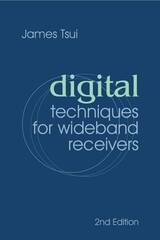
Digital Techniques for Wideband Receivers
James B. Tsui
The Institution of Engineering and Technology, 2004
This newly updated, second edition of Digital Techniques for Wideband Receivers is a current, comprehensive design guide for your digital processing work with today's complex receiver systems. Brand new material brings you up-to-date with the latest information on wideband electronic warfare receivers, the ADC testing procedure, frequency channelization and decoding schemes, and the operation of monobit receivers. The book shows you how to effectively evaluate ADCs, offers insight on building electronic warfare receivers, and describes zero crossing techniques that are critical to new receiver design. From fundamental concepts and procedures to recent technology advances in digital receivers, you get practical solutions to all your demanding wideband receiver problems. This hands-on reference is packed with 1,103 equations and 315 illustrations that support key topics covered throughout the book.
[more]
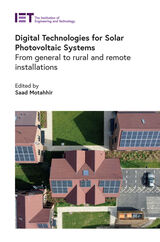
Digital Technologies for Solar Photovoltaic Systems
From general to rural and remote installations
Saad Motahhir
The Institution of Engineering and Technology, 2022
The rising share of photovoltaic (PV) energy requires sophisticated digital techniques for control, monitoring and integration with the grid. In remote areas, where no trained personnel might be nearby to intervene, such technologies are vital to ensure reliability and power quality, and to harness the solar potential of these locations. Moreover, tracking is necessary for moveable systems. Digital technologies can be used to enable and augment the use of PV energy in the grid, as well as for desalination, water pumping and hydrolysis.
[more]
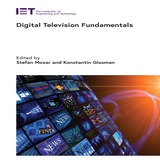
Digital Television Fundamentals
Stefan Mozar
The Institution of Engineering and Technology, 2024
Digital television (DTV) is the transmission of audio and video data by digitally processed and multiplexed signals compared to analog and channel separated signals used by analog television. DTV represents the most significant evolution in television technology since color television in the 1950s. The transition from analog to digital broadcasting began around 2006 with many countries at various stages of adaptation. DTV provides new features that analog television cannot support including the need for less bandwidth and higher image resolution, transmission via several channels including terrestrial transmitters using antennas, digital cables and satellites, microwaves and the internet.
[more]
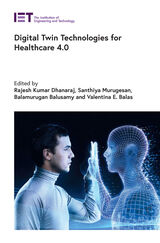
Digital Twin Technologies for Healthcare 4.0
Rajesh Kumar Dhanaraj
The Institution of Engineering and Technology, 2022
In healthcare, a digital twin is a digital representation of a patient or healthcare system using integrated simulations and service data. The digital twin tracks a patient's records, crosschecks them against registered patterns and analyses any diseases or contra indications. The digital twin uses adaptive analytics and algorithms to produce accurate prognoses and suggest appropriate interventions. A digital twin can run various medical scenarios before treatment is initiated on the patient, thus increasing patient safety as well as providing the most appropriate treatments to meet the patient's requirements.
[more]

Digital Twins for 6G
Fundamental theory, technology and applications
Hamed Ahmadi
The Institution of Engineering and Technology, 2024
Digital twin (DT) technology is a real-time evolving digital duplicate of a physical object or process that contains all its history. It is enabled by massive real-time multi-source data collection and analysis. While 6G is considered as an enabler of digital twins, DT can also be a facilitator for integrating AI and 6G towards reliable, pervasive and efficient intelligent technologies.
[more]
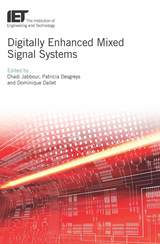
Digitally Enhanced Mixed Signal Systems
Chadi Jabbour
The Institution of Engineering and Technology, 2019
Digitally enhanced analog and mixed signal techniques are increasingly important to current and future circuit and system design. This book discusses how digital enhancement can be used to address key challenges relevant to analog components in terms of shrinking CMOS technology, increasing user demand for higher flexibility and data traffic in communications networks, and the drive to reduce power consumption.
[more]
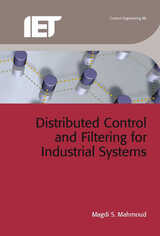
Distributed Control and Filtering for Industrial Systems
Magdi S. Mahmoud
The Institution of Engineering and Technology, 2012
In recent years technological advancements in the design and fabrication of integrated circuits have led to the development of cost effective, low power, thumb-size devices that can be used for sensing/actuating, communication and computing. This trend is enabling a surge of new applications for which pervasive network architectures are being developed. A key feature of these systems is that they are decentralized and communication among different subsystems may be unreliable. From an engineering viewpoint, to ensure correct operation, the theoretical analysis requires a fundamental paradigm shift, as many of the typical assumptions of systems and control theory cease to hold.
[more]

Distributed Energy Storage in Urban Smart Grids
Paulo F. Ribeiro
The Institution of Engineering and Technology, 2023
Renewable energy is key to stopping climate change, however, the intermittent nature of most forms of renewable energy generation poses a challenge. Energy storage is therefore a focus of research and development, particularly for urban areas with their limited space and high population density, which results in massive demand for both small distributed and utility-scale generation. Such locations require thorough integration of storage, with the urban energy system treated as a whole, and sufficient planning, sizing and siting, and upgrades to the existing power grid hardware.
[more]

Distributed Feedback Semiconductor Lasers
John Carroll
The Institution of Engineering and Technology, 1998
Distributed feedback (DFB) semiconductor lasers emit light in a single mode which is essential to providing the carrier in long haul high bit-rate optical communication systems. This comprehensive research monograph provides:
[more]

Distributed Generation
Nick Jenkins
The Institution of Engineering and Technology, 2010
Throughout the world there is concern over the impact of energy use on the environment (particularly CO2 emissions) and also over the security of fossil fuel supplies. Consequently, governments and energy planners are actively encouraging alternative and cleaner forms of energy production such as renewables (e.g. wind, solar, biomass) and combined heat and power (CHP).
[more]
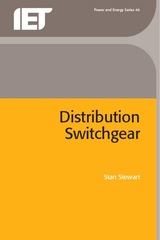
Distribution Switchgear
Stan Stewart
The Institution of Engineering and Technology, 2004
Switchgear plays a fundamental role within the power supply industry. It is required to isolate faulty equipment, divide large networks into sections for repair purposes and reconfigure networks in order to restore power supplies and control other equipment.
[more]
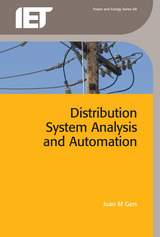
Distribution System Analysis and Automation
Juan M. Gers
The Institution of Engineering and Technology, 2013
Distribution systems analysis employs a set of techniques that allow engineers to simulate, analyse, and optimise power distribution systems. Combined with automation, these techniques underpin the emerging concept of the 'smart grid', a digitally-enabled electrical supply grid that can monitor and respond to the behaviour of all its components in real time.
[more]
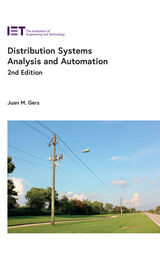
Distribution Systems Analysis and Automation
Juan Manuel Gers
The Institution of Engineering and Technology, 2020
Distribution systems analysis employs a set of techniques to simulate, analyse, and optimise power distribution systems. Combined with automation, these techniques underpin the concept of the smart grid. In recent years, distribution systems have been facing growing challenges, due to increasing demand as well as the rising shares of distributed and volatile renewable energy sources.
[more]
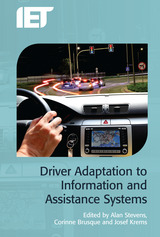
Driver Adaptation to Information and Assistance Systems
Alan Stevens
The Institution of Engineering and Technology, 2013
Driver information and assistance systems have emerged as an integral part of modern road vehicles in order to support the driver while driving. They make use of the newest information technologies in order to enhance driver awareness, safety and comfort, and thereby avoiding driver errors and accidents. Driver Adaptation to Information and Assistance Systems brings together recent work by the Marie-Curie Initial Training Network ADAPTATION. The project has studied drivers' behavioural adaptation to these new technologies from an integrative perspective working under a joint conceptual theoretical framework of behavioural adaptation that can be used to generate research hypotheses about how drivers will adapt to information and assistance systems and to derive guidelines for the design and deployment of such systems.
[more]

Driving Simulators for the Evaluation of Human-Machine Interfaces in Assisted and Automated Vehicles
Toshio Ito
The Institution of Engineering and Technology, 2021
Driving Simulators for the Evaluation of Human-Machine Interfaces in Assisted and Automated Vehicles is a concise reference work on driving simulators, which conveys the technology behind simulator systems used to test driver assistance systems and automated vehicles, including electric vehicles. Coverage includes architecture, computer graphics, evaluation parameters and applied examples.
[more]
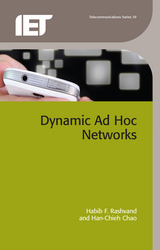
Dynamic Ad Hoc Networks
Habib F. Rashvand
The Institution of Engineering and Technology, 2013
Motivated by the exciting new application paradigm of using amalgamated technologies of the Internet and wireless, the next generation communication networks (also called 'ubiquitous', 'complex' and 'unstructured' networking) are changing the way we develop and apply our future systems and services at home and on local, national and global scales. Whatever the interconnection - a WiMAX enabled networked mobile vehicle, MEMS or nanotechnology enabled distributed sensor systems, Vehicular Ad hoc Networking (VANET) or Mobile Ad hoc Networking (MANET) - all can be classified under new networking structures which can be given the generic title of 'ad hoc' communication networking.
[more]
READERS
Browse our collection.
PUBLISHERS
See BiblioVault's publisher services.
STUDENT SERVICES
Files for college accessibility offices.
UChicago Accessibility Resources
home | accessibility | search | about | contact us
BiblioVault ® 2001 - 2024
The University of Chicago Press









